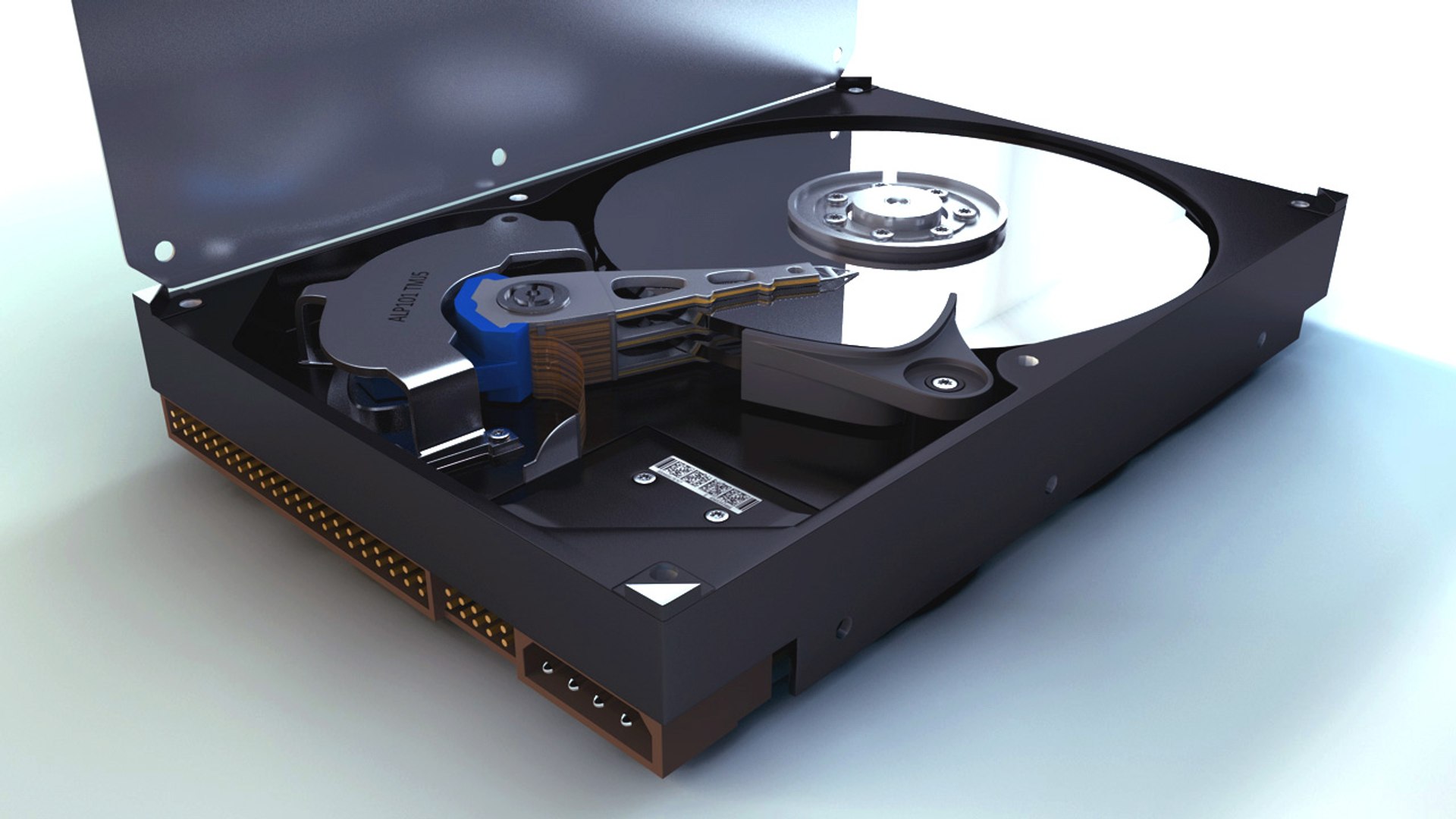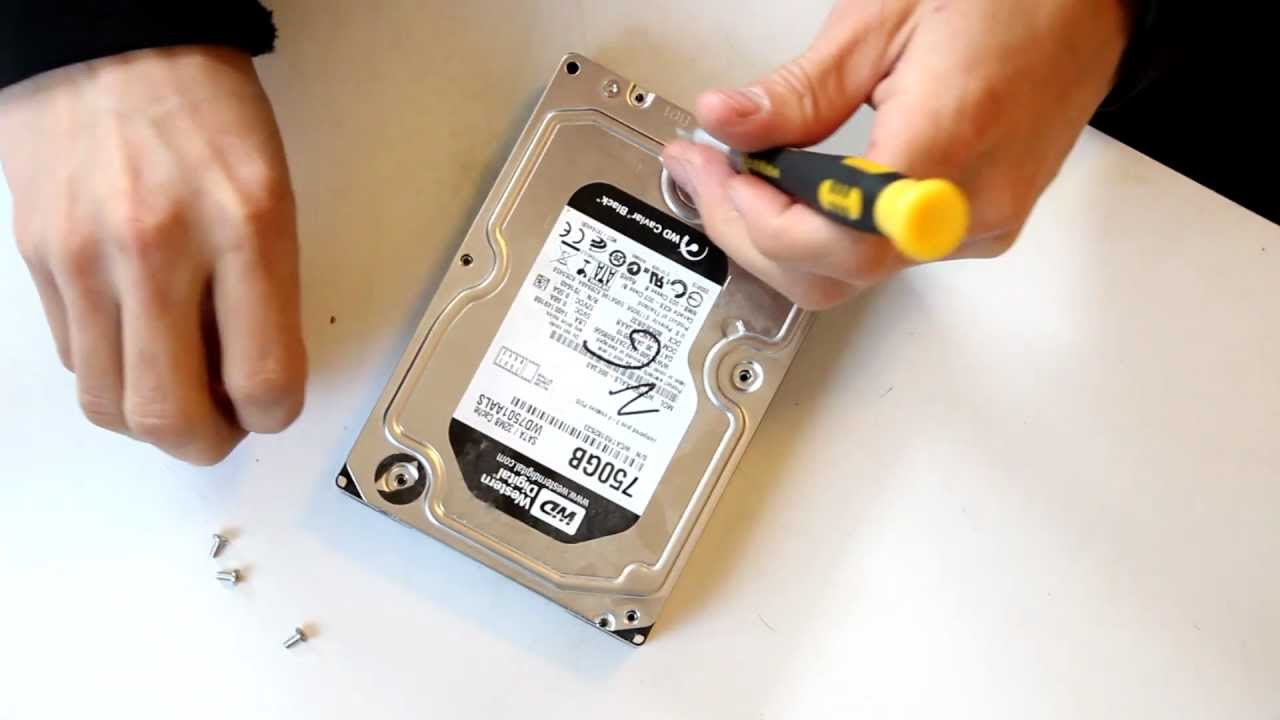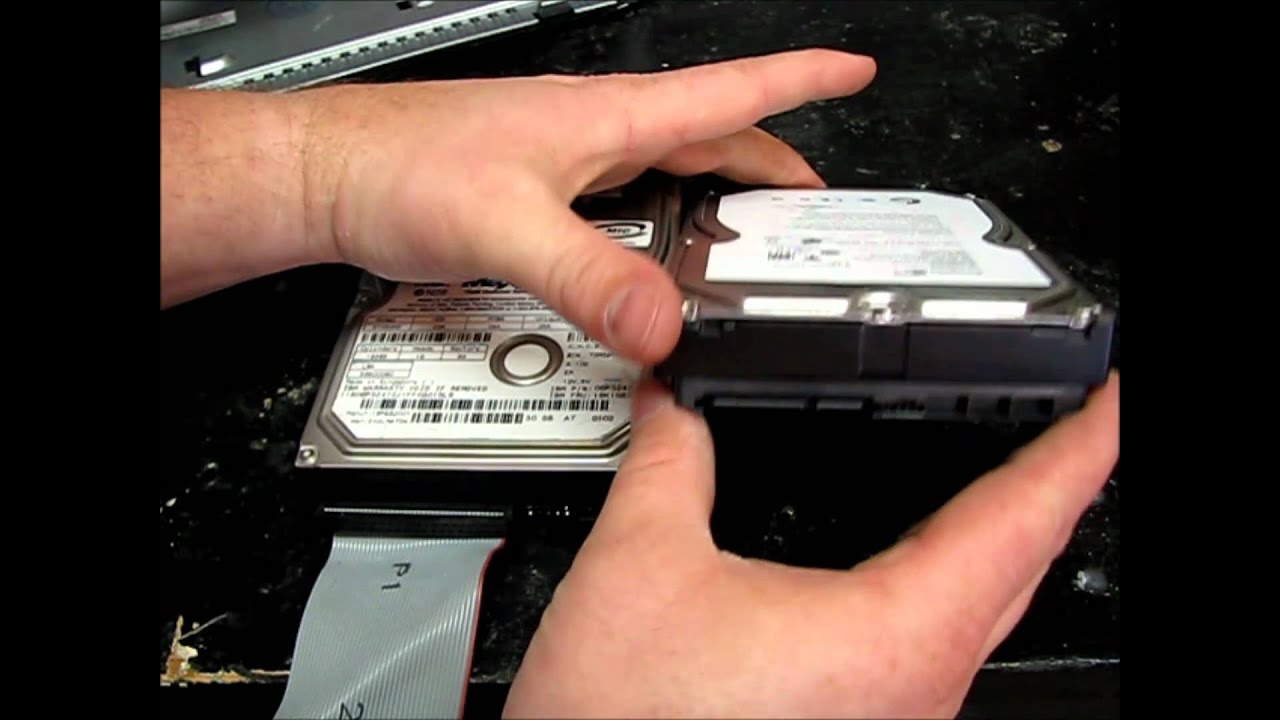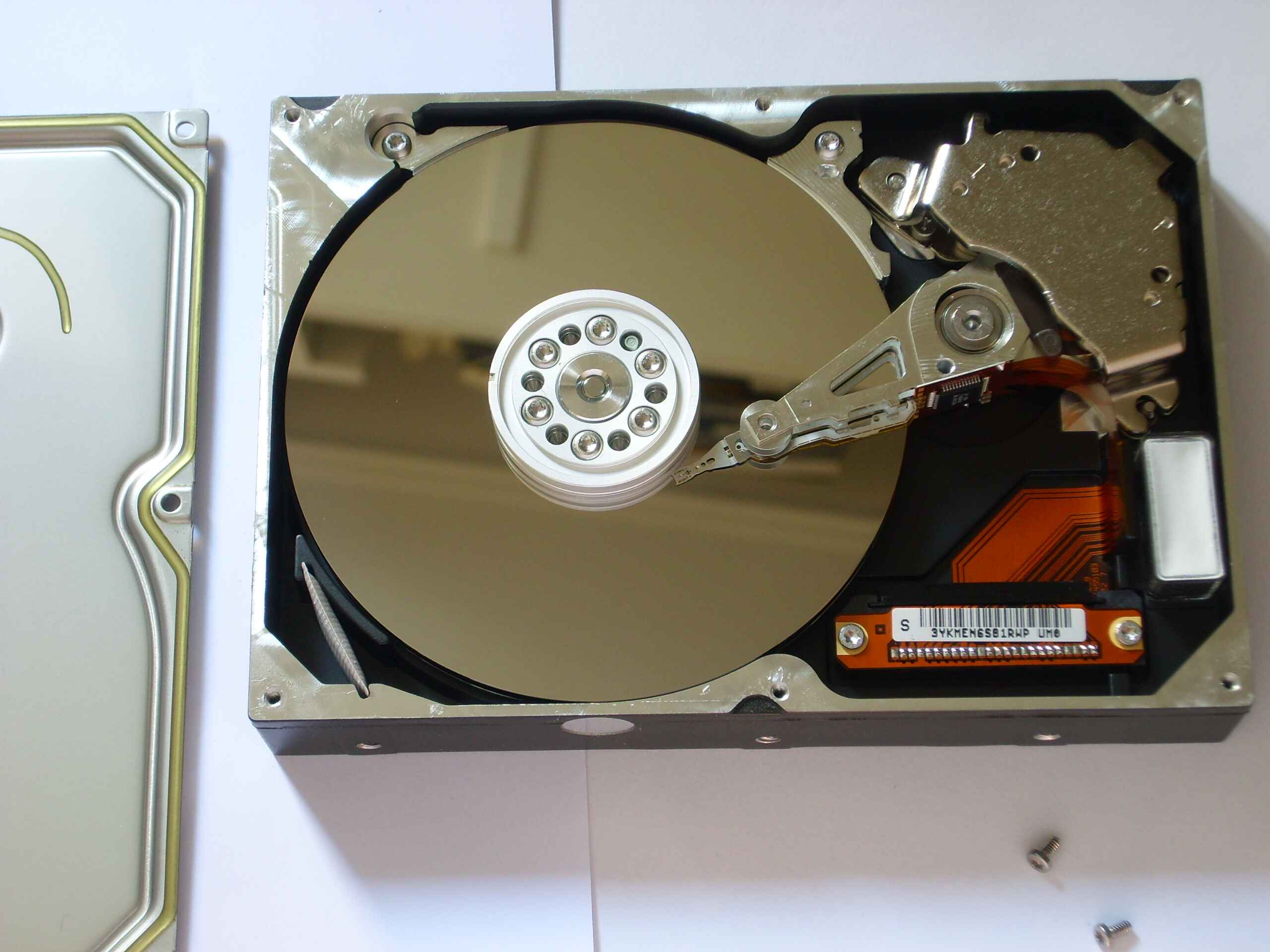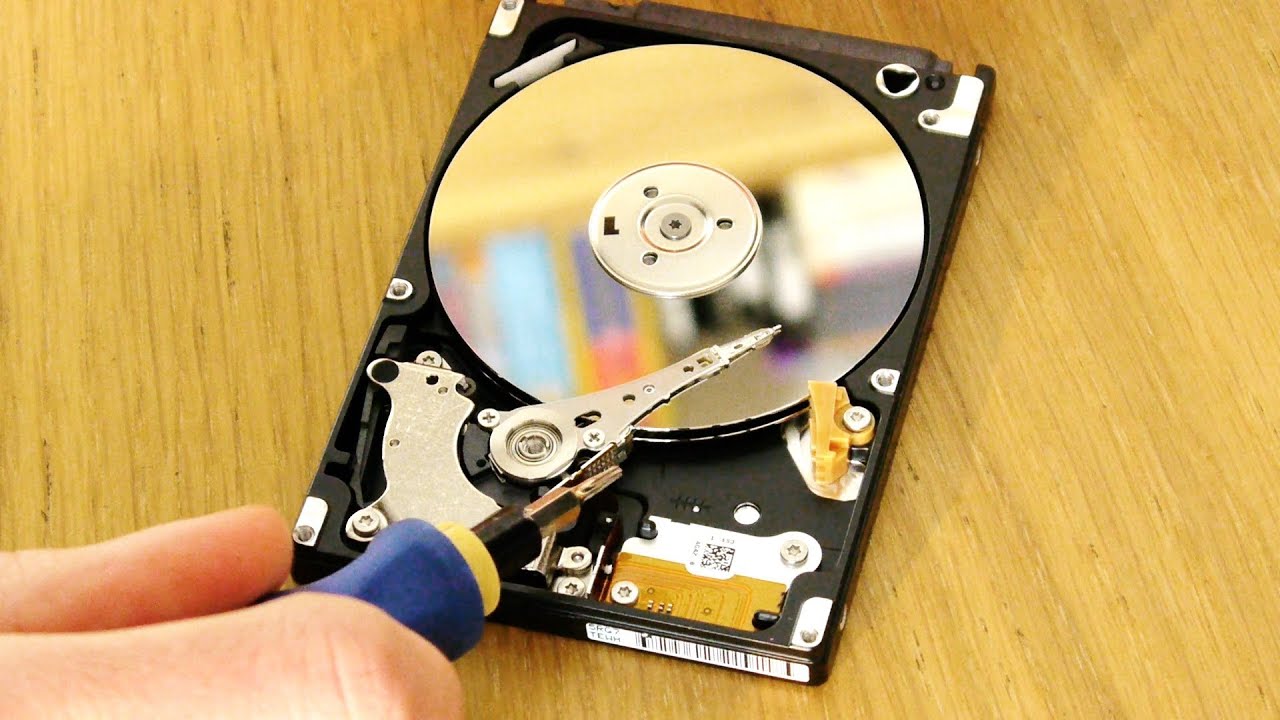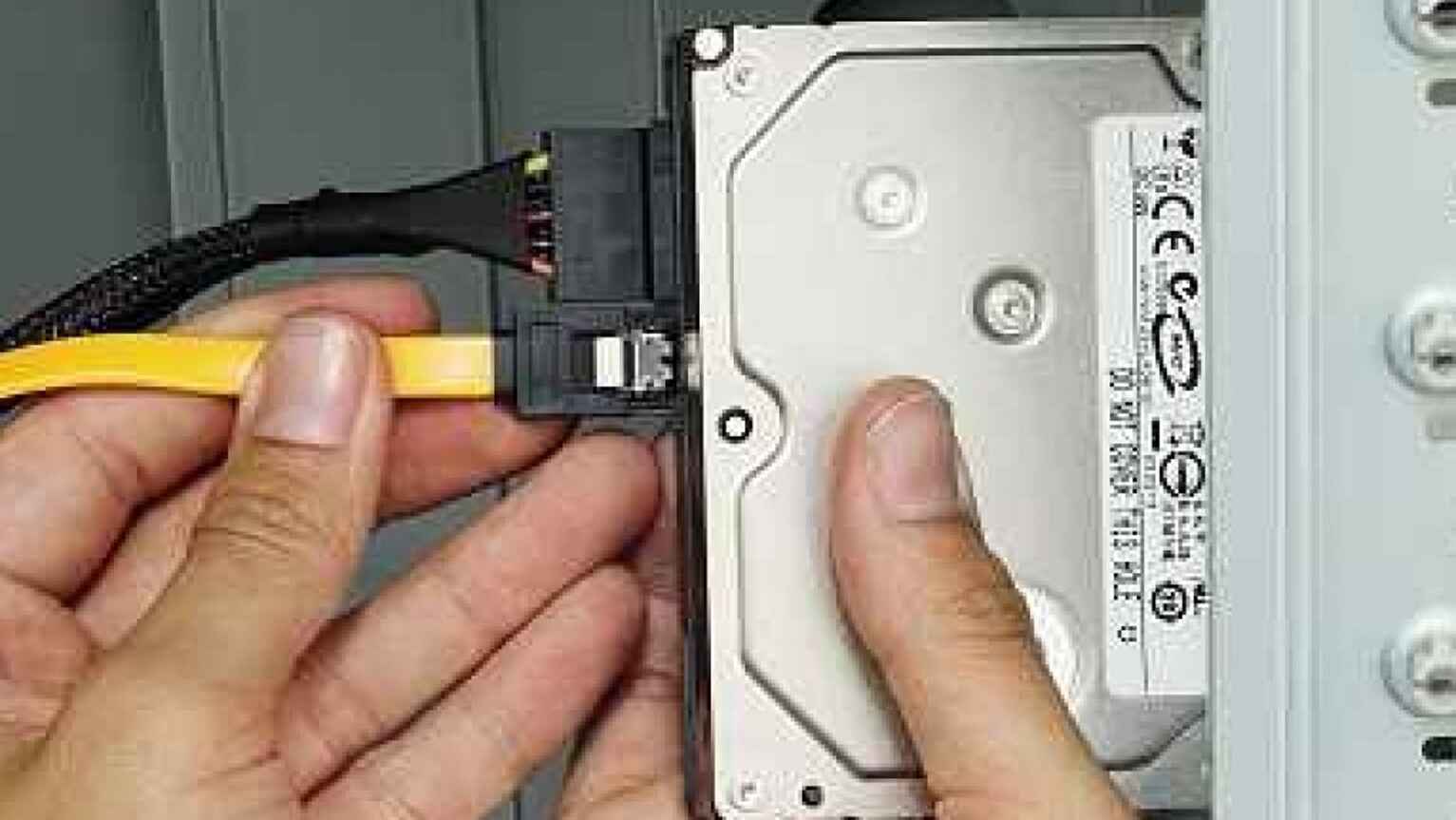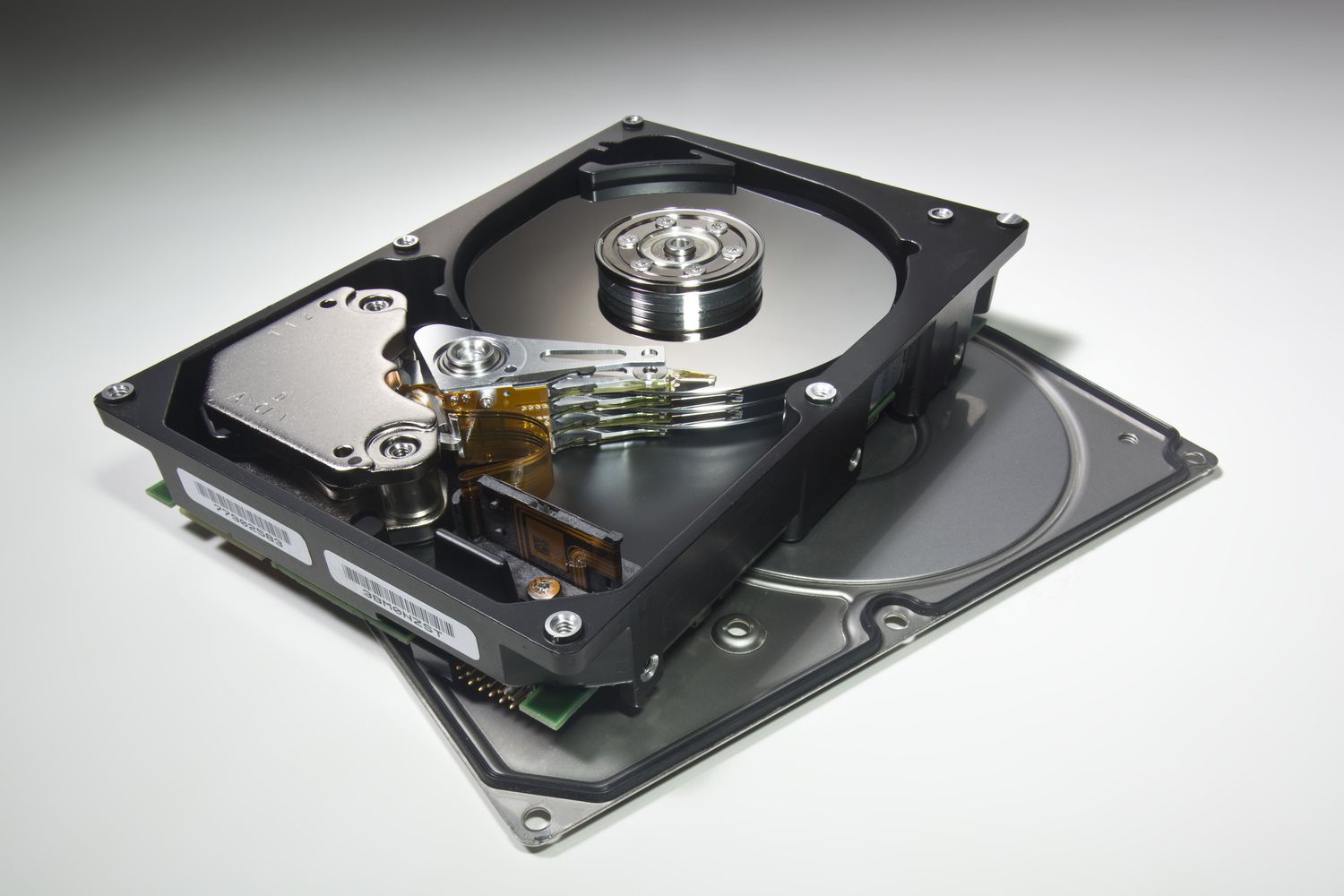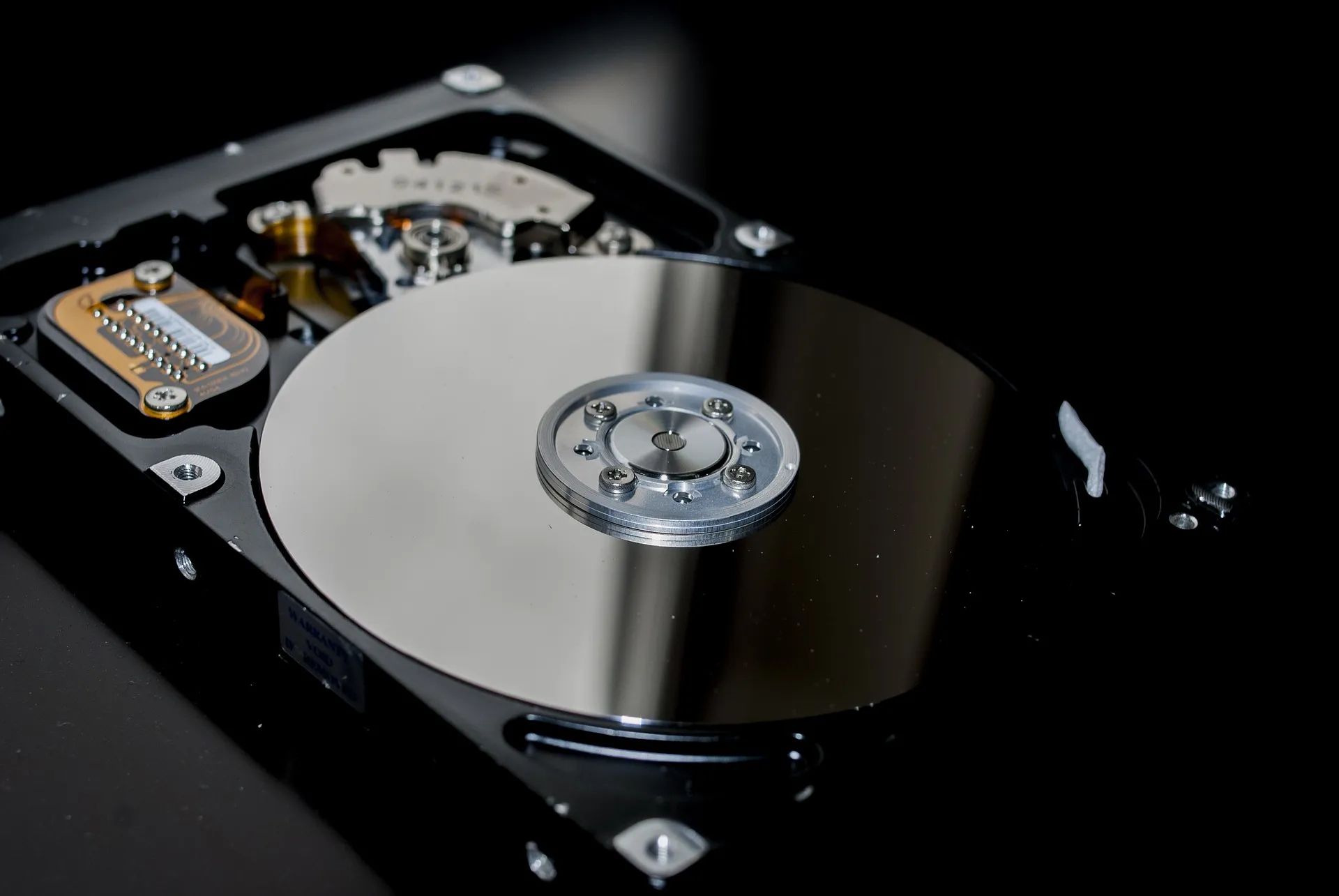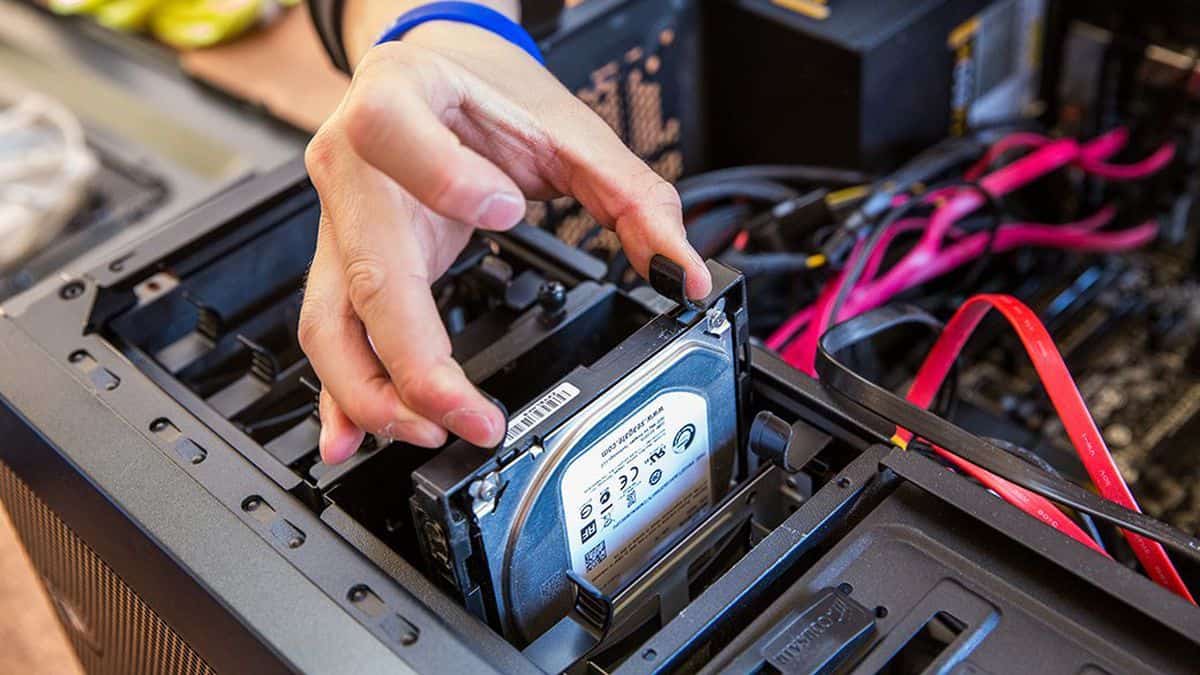Introduction
The hard disk drive (HDD) is a fundamental component of computer systems that has revolutionized data storage and retrieval. It plays a vital role in the functioning of desktops, laptops, servers, and other devices reliant on storing and accessing data. The HDD consists of several crucial components working in harmony to achieve high performance and reliability.
In this article, we will explore the various components of a hard disk drive and uncover their significance in the overall functionality. Understanding these components will provide us with valuable insights into how data is stored, retrieved, and managed within the hard drive.
From the spinning platters to the advanced firmware, each component contributes to the seamless operation of the hard disk drive. Let’s dive into the intricacies of the HDD and gain a deeper understanding of its inner workings.
By the end of this article, you will have a comprehensive knowledge of the components that make up a hard disk drive and how they collaborate to deliver efficient data storage and retrieval.
Platters
The platters are the circular, metallic disks that serve as the primary storage medium in a hard disk drive. These thin and rigid disks are coated with a magnetic material that allows for the storage of data. The platters are stacked one on top of another and are responsible for storing all the information in the form of magnetized bits.
Platters are typically made from aluminum or glass, and they rotate at high speeds within the HDD. The rotation is facilitated by the spindle motor, which we will discuss later in this article. The platters are aligned on a central spindle and rotate in unison.
The number of platters within a hard disk drive can vary depending on the capacity of the drive. Traditional HDDs usually have multiple platters, whereas smaller-capacity drives may have only one. The surfaces of the platters are coated with a magnetic layer, allowing data to be written and read through the use of magnetic heads.
Each platter is divided into tracks, which are further divided into sectors. These sectors are the smallest addressable units on the platters, and they store data in a binary format consisting of magnetized regions. The density of these magnetized regions, also known as magnetic bits, determines the storage capacity of the platter.
The platters’ rotation speed is measured in revolutions per minute (RPM). Higher RPM values result in faster data access and transfer rates. Common speeds for HDDs range from 5,400 to 10,000 RPM, with higher speeds typically found in performance-oriented drives.
The platters are a critical component of a hard disk drive as they are directly involved in data storage and retrieval. The efficiency of the platters’ rotation and the density of the data stored on them greatly influence the overall performance and capacity of the HDD.
Read/Write Heads
The read/write heads are small components within the hard disk drive that are responsible for reading and writing data to the platters. These microscopic heads hover just above the surface of the spinning platters and move rapidly across them to access the desired data.
Each platter has two read/write heads, one for each side of the platter. These heads are mounted on an actuator arm and are controlled by the positioning mechanism of the hard drive. The read/write heads are tasked with accurately interpreting the magnetic field on the platter’s surface and converting it into readable data.
When data needs to be written to the hard disk drive, the write head generates a magnetic field that corresponds to the data being stored. This magnetic field magnetizes specific regions on the platter’s surface, encoding the information as magnetized bits. Conversely, when data needs to be retrieved, the read head senses the magnetic field and converts it into electrical signals that can be interpreted by the computer system.
The read/write heads operate at an extremely close distance to the platter’s surface, separated by a thin layer of air. This proximity allows for precise reading and writing of data. However, it also means that any physical contact between the heads and the platter can result in data loss or even irreversible damage.
To mitigate the risk of head crashes, modern hard disk drives incorporate various technologies, such as flying height control and dynamic head loading, to maintain optimal spacing and prevent head-to-platter contact. These advancements ensure the longevity and reliability of the read/write heads and the overall functionality of the hard disk drive.
The performance of the read/write heads, including their accuracy and speed, greatly influences the data access and transfer rates of the hard disk drive. Advancements in head technology have led to increased storage densities and improved overall performance of HDDs.
Actuator Arm
The actuator arm is an integral part of the hard disk drive that controls the movement of the read/write heads. It is responsible for positioning the heads accurately over the desired tracks on the platters. The actuator arm assembly consists of a mechanical arm, a voice coil motor (VCM), and a flexible suspension system.
When the computer system requests data from the hard disk drive, the actuator arm swiftly moves the read/write heads to the appropriate location on the platters. This movement is critical for efficient data access and retrieval, as it minimizes the time required to read or write data. The actuator arm is designed to move rapidly and accurately, ensuring that the read/write heads are aligned with the desired data tracks.
The movement of the actuator arm is controlled by the voice coil motor (VCM), which is a precise electromagnetic device. The VCM interacts with the magnetic field of the hard disk drive to position the actuator arm and, consequently, the read/write heads. This dynamic system allows for quick and precise movements, optimizing the performance of the HDD.
The actuator arm assembly also includes a flexible suspension system that connects the read/write head assembly to the actuator arm. This suspension system allows for slight movements and adjustments of the read/write heads, ensuring that they maintain the proper distance from the platter surface during operation.
Modern hard disk drives employ advanced technologies, such as embedded servo systems, to enhance the accuracy and speed of the actuator arm movement. These technologies enable more precise positioning of the read/write heads, resulting in improved data access speeds and overall performance.
The actuator arm, along with its supporting components, plays a crucial role in the functionality and performance of the hard disk drive. Its ability to accurately position the read/write heads influences the speed and efficiency of data storage and retrieval, making it a vital component in modern storage solutions.
Spindle Motor
The spindle motor is a key component of a hard disk drive that is responsible for spinning the platters at high speeds. This motor is crucial for the proper functioning of the hard disk drive, as it ensures that the platters rotate consistently and at the desired RPM (revolutions per minute).
The spindle motor is typically a brushless DC motor that generates rotational motion. The motor is mounted on the spindle shaft, which is connected to the platters. When power is supplied to the motor, it creates a magnetic field that interacts with the magnets within the motor, causing the spindle and platters to rotate.
The speed at which the platters rotate is an important factor in determining the performance of the hard disk drive. Higher RPM values result in faster data access and transfer rates. Common spindle motor speeds for HDDs range from 5,400 to 10,000 RPM, with variations depending on the drive’s intended purpose and performance requirements.
It is worth noting that higher RPM values also lead to increased noise levels, heat generation, and power consumption. Drive manufacturers carefully balance these factors to ensure optimal performance and reliability while considering the user’s needs and preferences.
Modern hard disk drives incorporate various technologies to improve the performance and efficiency of the spindle motor. These technologies include fluid dynamic bearings (FDB) and dynamic balancing, which enhance the motor’s stability, reduce vibrations, and extend its lifespan.
The spindle motor is a critical component that directly impacts the overall functionality and performance of the hard disk drive. Its ability to rotate the platters accurately and at the desired speed is essential for efficient data storage and retrieval.
Controller Board
The controller board, also known as the hard disk controller or PCB (Printed Circuit Board), is a vital component of a hard disk drive. It serves as the interface between the computer system and the various components within the drive, coordinating their functions and facilitating data transfer.
The controller board contains a microcontroller or chipset that acts as the brain of the hard disk drive. This microcontroller is responsible for executing various tasks, including managing the data flow, controlling the read/write operations, and handling error correction and detection.
One of the key functions of the controller board is to provide the interface between the hard disk drive and the computer system. It is equipped with connectors that allow for the physical and electrical connection of the drive to the motherboard or host device. Examples of these connectors include SATA (Serial ATA), PATA (Parallel ATA), or SCSI (Small Computer System Interface).
The controller board also plays a crucial role in data organization and management within the hard disk drive. It contains firmware, which is a type of embedded software that provides the necessary instructions and algorithms for efficient data storage, retrieval, and error correction. The firmware is responsible for managing disk operations, optimizing performance, and enhancing the drive’s reliability.
Advanced controller boards may also include additional features such as data encryption, power management, and data caching. These features further enhance the functionality and security of the hard disk drive.
In addition to its functional aspects, the controller board also houses various components to ensure the stability and durability of the hard disk drive. These include capacitors, resistors, and other electronic components that protect the drive from power fluctuations and help maintain data integrity.
The controller board, being the central hub of the hard disk drive, is crucial for the overall performance, data management, and interface connectivity of the drive. It enables efficient communication between the drive and the computer system, ensuring seamless data transfer and proper functioning of all components.
Interface
The interface of a hard disk drive refers to the type of connection it uses to communicate with the computer system or host device. The interface plays a critical role in determining the speed, compatibility, and overall performance of the drive.
There are several types of interfaces that have been used in hard disk drives over the years, with each new generation often introducing faster and more advanced options. Common interface types include SATA (Serial ATA), IDE (Integrated Drive Electronics), SCSI (Small Computer System Interface), and NVMe (Non-Volatile Memory Express).
SATA is the most widely used interface in modern hard disk drives. It offers fast data transfer rates, ease of installation, and broad compatibility with various computer systems. SATA interfaces typically come in different generations, such as SATA II, SATA III, and SATA III 6 Gbps, each offering improved performance over its predecessor.
IDE, also known as PATA (Parallel ATA), was the dominant interface before SATA. IDE interfaces feature a wide data bus that connects the hard drive to the motherboard. While not as fast as SATA, IDE drives are still used in older systems or for specialized applications where compatibility is essential.
SCSI interfaces are commonly found in enterprise-level hard disk drives. SCSI offers high-speed data transfer, advanced features for RAID (Redundant Array of Independent Disks) configurations, and support for multiple devices on a single SCSI bus.
NVMe is a newer and increasingly popular interface designed specifically for SSDs (Solid-State Drives). It utilizes the PCIe (Peripheral Component Interconnect Express) bus, providing significantly faster data transfer speeds compared to traditional SATA interfaces. NVMe drives offer exceptional performance and are commonly used in high-performance computing and gaming systems.
The choice of interface depends on the requirements of the system and the performance needs of the user. Factors such as data transfer speed, compatibility, and cost play a significant role in selecting the appropriate interface for a hard disk drive.
It’s worth noting that while the interface determines the connection between the hard disk drive and the computer system, it does not solely dictate the drive’s performance. Other factors, such as the drive’s internal components, firmware, and RPM, also impact performance.
The interface is a critical component of the hard disk drive that determines how effectively the drive can communicate with the computer system. Selecting the right interface ensures optimal performance, compatibility, and data transfer rates for the user’s specific needs.
Cache
The cache, also known as the disk cache or buffer, is a small segment of high-speed memory located within the hard disk drive. It functions as a temporary storage space for frequently accessed data, improving the overall performance and responsiveness of the drive.
When data is requested from the hard disk drive, the cache plays a crucial role in speeding up the retrieval process. It stores copies of recently read or written data, allowing for faster access if the same data needs to be accessed again in the near future. By reducing the number of physical read or write operations required to access data, the cache significantly improves the overall efficiency of the drive.
The cache memory in a hard disk drive is typically made of volatile memory, such as dynamic random-access memory (DRAM). Volatile memory means that the data stored in the cache is lost when power to the drive is cut off. As a result, the cache is continuously updated as new data is read or written to the hard disk drive.
The size of the cache can vary depending on the drive manufacturer and model. Cache sizes typically range from a few megabytes (MB) to several gigabytes (GB). Larger cache sizes generally provide better performance, especially for tasks that involve frequent random read or write operations.
In addition to improving performance, the cache also plays a role in enhancing data integrity and reliability. It acts as a buffer between the computer system and the physical disk, allowing for better management of read and write operations. The cache can temporarily hold data until it is confirmed to be accurately written to the physical disk, reducing the likelihood of data corruption or loss.
Caching algorithms and techniques vary among hard disk drives, with some utilizing adaptive caching to optimize performance based on usage patterns. These algorithms monitor data access patterns and adjust the cache to prioritize frequently accessed data, further improving overall performance.
It’s important to note that cache memory in a hard disk drive is different from the cache found in processors or solid-state drives (SSDs). While they serve a similar purpose of temporarily storing frequently accessed data, they are separate components with distinct functionalities.
The cache is a valuable component within a hard disk drive, providing a bridge between the slower mechanical operations of the drive and the fast-paced demands of the computer system. Its presence greatly improves performance, responsiveness, and data integrity, resulting in a more efficient overall computing experience.
Firmware
Firmware is an essential component of a hard disk drive that consists of embedded software responsible for managing and controlling various aspects of the drive’s operation. It serves as a bridge between the hardware components and the computer system, ensuring smooth functionality and optimal performance.
Embedded within the controller board, the firmware provides the necessary instructions and algorithms for data storage, retrieval, error correction, and overall drive management. It is designed to handle low-level tasks, such as controlling the read/write operations, managing power consumption, and ensuring data integrity.
One of the primary functions of firmware is to facilitate the communication between the hard disk drive and the computer system. It interprets the commands and requests from the computer system and translates them into the appropriate actions within the drive.
Firmware also plays a crucial role in error correction and detection. It implements sophisticated algorithms and checksum calculations to identify and correct errors that may occur during data transfer or storage. By detecting and correcting errors in real-time, firmware ensures that the data stored on the drive is accurate and reliable.
Additionally, firmware manages various features and characteristics of the hard disk drive, such as the spin-up time, power management, and advanced functionality like native command queuing (NCQ) and hot-swapping. It optimizes the performance and efficiency of the drive by dynamically adjusting various parameters based on workload and usage patterns.
Drive manufacturers often release firmware updates to address bugs, improve performance, and introduce new features. These updates can be applied to the hard disk drive to enhance its functionality and extend its lifespan.
It is important to note that firmware is specific to each hard disk drive model and manufacturer. Different firmware versions may offer varying features and performance characteristics. Therefore, it is recommended to stay updated with the latest firmware releases provided by the manufacturer to ensure optimal performance and compatibility.
Firmware is a critical component that enables the seamless operation of the hard disk drive. It ensures the efficient management of data, enhances performance, and provides the necessary functionality to meet the evolving demands of modern computing systems.
Power Connector
The power connector is a vital part of a hard disk drive that provides the necessary electrical power to the drive. It allows the hard disk drive to receive power from the computer system or external power source, enabling it to operate and carry out its functions.
The power connector on a hard disk drive typically consists of multiple pins or connectors that match the corresponding power cables from the power supply unit (PSU) of the computer system. The most common type of power connector used in modern systems is the SATA power connector.
The SATA power connector is a small, rectangular-shaped connector with multiple pins that securely plug into the SATA power cable. It delivers the proper voltage levels, typically +5V and +12V, required for the hard disk drive to function correctly.
Older hard disk drives may use different types of power connectors, such as the Molex power connector. These connectors have a different pin configuration but perform the same function of supplying power to the drive.
The power connector ensures a reliable power supply to the hard disk drive, allowing it to spin up the platters, activate the read/write heads, and perform the necessary operations for data storage and retrieval. Without a proper and secure power connection, the hard disk drive would not function.
It is crucial to ensure that the power connector is firmly and correctly connected to the hard disk drive. Loose or improper connections can lead to intermittent power supply, resulting in drive failures, data corruption, or potential damage to the drive itself.
Additionally, the power connector may also include features for hot-plugging, which allows the drive to be connected or disconnected while the computer system is running. This feature is especially useful for external hard drives or storage systems that may require frequent connectivity changes.
Overall, the power connector is an essential component of a hard disk drive, providing the necessary electrical power for it to operate. It ensures a reliable power supply, enabling the drive to function correctly and perform its vital tasks of data storage and retrieval.
Data Connector
The data connector is a crucial component of a hard disk drive that provides the interface for data transfer between the drive and the computer system. It serves as the bridge that allows the computer to communicate with the hard disk drive, enabling the exchange of information.
The most common type of data connector used in modern hard disk drives is the SATA (Serial ATA) data connector. It features a small, L-shaped connector with multiple pins that securely plug into the SATA data cable. The SATA data connector is designed to provide fast and reliable data transfer rates, making it ideal for most consumer and enterprise hard disk drives.
Another type of data connector used in older hard disk drives is the IDE (Integrated Drive Electronics) connector, also known as a PATA (Parallel ATA) connector. Unlike SATA, IDE connectors feature a wide, flat ribbon cable that connects the drive to the motherboard. IDE connectors have been largely replaced by SATA for their improved performance and compatibility.
In addition to SATA and IDE, other types of data connectors include SCSI (Small Computer System Interface) for enterprise-level drives and specialized connectors for unique storage interfaces such as SAS (Serial Attached SCSI) and Fibre Channel.
It is important to use the appropriate data cable that matches the data connector type on the hard disk drive and the motherboard or host device. Using an incompatible data cable can result in poor data transfer rates, data corruption, or the drive not being recognized by the system.
The evolution of data connectors has brought advancements in data transfer speeds and features. SATA connectors, for example, have different generations (SATA II, SATA III) that offer varying data transfer rates, with SATA III providing up to 6 Gbps transfer speed.
Moreover, data connectors may also incorporate additional features such as hot-swapping, which allows for the connection or disconnection of drives while the system is powered on, facilitating ease of use and flexibility in storage configurations.
The data connector plays a critical role in enabling seamless data transfer between the hard disk drive and the computer system. It allows for the exchange of information and ensures that data is accurately read and written, making it a vital component in modern storage solutions.
Conclusion
The hard disk drive is a complex storage device comprising several critical components that work together to facilitate data storage and retrieval. From the spinning platters and read/write heads to the actuator arm and controller board, each component contributes to the overall functionality and performance of the drive.
The platters serve as the primary storage medium, while the read/write heads allow for the reading and writing of data. The actuator arm positions the heads accurately over the desired tracks, while the spindle motor spins the platters at high speeds.
The controller board acts as the interface between the drive and the computer system, coordinating the drive’s functions and managing data transfer. Firmware within the controller board provides instructions and algorithms for efficient data management and error correction.
Furthermore, the power connector supplies electrical power to the hard disk drive, while the data connector allows for the transfer of information between the drive and the computer system.
Understanding the components of a hard disk drive provides valuable insights into how data is stored, accessed, and managed within the drive. Each component plays a crucial role in ensuring the drive’s performance, reliability, and data integrity.
As technology advances, these components continue to evolve, offering increased storage capacity, faster data transfer rates, and enhanced reliability. It is important to stay informed about the latest advancements in hard disk drive technology to make informed decisions when choosing storage solutions.
Overall, the components of a hard disk drive work in synergy to provide efficient data storage, quick access, and reliable data management. They form the foundation of modern computer storage systems and are essential for the functioning of desktops, laptops, servers, and other devices.







